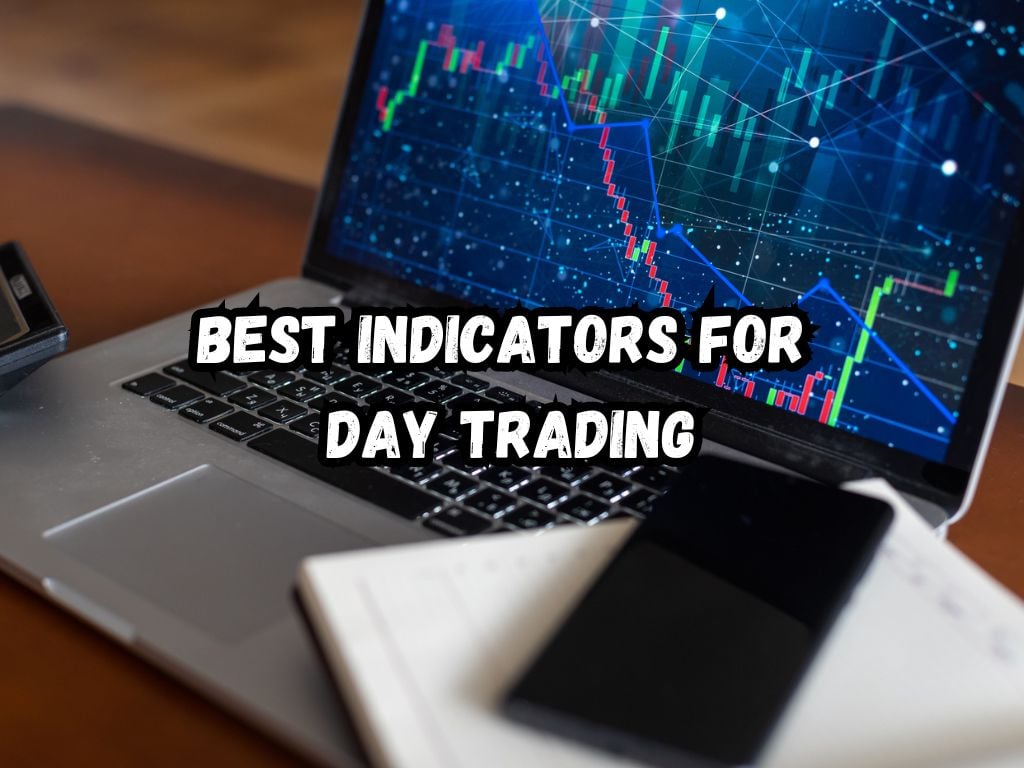Day trading is a fast-paced world where decisions must be quick and informed. Indicators serve as the compass for these decisions, guiding traders through the volatile markets.
This article delves into the indispensable tools that every day trader should know: the best indicators for day trading.
Understanding Best Indicators for Day Trading
Trading indicators are mathematical calculations. Traders use them to forecast future price movements based on past trends.
These tools are pivotal in deciding when to buy or sell. They can predict market trends and provide insights into the market’s momentum, volume, and other vital aspects.
Categories of Indicators
Indicators fall into categories such as leading vs. lagging and technical vs. sentiment. Leading indicators predict future price movements, while lagging indicators confirm trends after they have started.
Technical indicators focus on price movements and patterns, whereas sentiment indicators gauge the mood of the market.

Best Indicators for Day Trading
Now, let’s explore some of the most effective indicators used in day trading.
1. Moving Averages (MA)
Moving averages smooth out price data to identify trends. Simple Moving Average (SMA) calculates the average of a selected range of prices.
Exponential Moving Average (EMA) gives more weight to recent prices. They help identify trends and reversals, serving as support and resistance levels.
2. Relative Strength Index (RSI)
The RSI measures the speed and change of price movements. It operates on a scale from 0 to 100.
Readings below 30 suggest an oversold condition, while above 70 indicates an overbought condition. It helps traders identify potential reversals.
3. Moving Average Convergence Divergence (MACD)
The MACD indicator helps identify trend direction and duration. It consists of two moving averages and a histogram.
The MACD signals potential buy or sell opportunities when the two moving averages converge or diverge.
4. Bollinger Bands
Bollinger Bands measure market volatility. They consist of a middle band being an SMA and two outer bands that represent volatility.
When the bands contract, low volatility is suggested; when they expand, high volatility is indicated. They also help identify overbought and oversold conditions.
5. Volume
Volume indicates the number of stocks traded in a given period. High volume confirms trends and signals the strength of price movements.
Surge in volume can precede trend changes, providing traders with critical buy or sell signals.
6. Fibonacci Retracement
Fibonacci Retracement involves horizontal lines that indicate where support and resistance are likely to occur. These levels are determined by Fibonacci numbers. This indicator helps identify strategic places for transactions.
7. Stochastic Oscillator
The Stochastic Oscillator compares a specific closing price of a stock to a range of its prices over a certain period. It helps identify momentum and potential reversal points by showing oversold or overbought conditions.
Combining Indicators for Optimal Results
Using a single indicator might not be the best approach. Combining them allows traders to verify the signals. For example, one might use MACD to identify the general trend and RSI to pinpoint entry points.

Pro Tips for Using Day Trading Indicators
Testing indicators through backtesting before real-world application is crucial. Adjusting settings to match your trading style and the current market condition is also vital.
Stay informed about economic news as it can affect the indicators’ performance.
Common Mistakes to Avoid
Avoid cluttering your chart with too many indicators as it can lead to confusion and contradictory signals.
Understanding the context and waiting for confirmation before making a move is also essential to avoid misinterpretation of signals.
Frequently Asked Questions
Can these indicators be used for trading in any market?
Yes. These indicators are versatile and can be adapted for different markets, including forex, stocks, and cryptocurrencies.
How can beginners get started with using these indicators?
Beginners should start by learning one indicator at a time. Practice using it in a demo trading account to understand how it works before applying it to real trades.
Are there any free indicator tools available for day traders?
Many trading platforms offer these indicators for free. Traders should explore their chosen platform’s features to find these valuable tools.
How often should I review and adjust my indicator settings?
Regular reviews are necessary, especially if the market condition changes. Adjusting settings can help improve the accuracy of the signals.
Do these indicators work equally well in volatile and stable markets?
Certain indicators, like Bollinger Bands, are more effective in volatile markets, while others, such as MAs, can perform well in more stable conditions. It depends on the market and the chosen indicator.
Conclusion
The best indicators for day trading provide critical insights into market trends and potential reversals. By understanding and utilizing these tools, traders can enhance their strategies and improve their chances of success.
Remember, no indicator provides a guarantee. However, when used effectively, they offer valuable guidance in the fast-moving day trading environment.


 Tags:
Tags:










